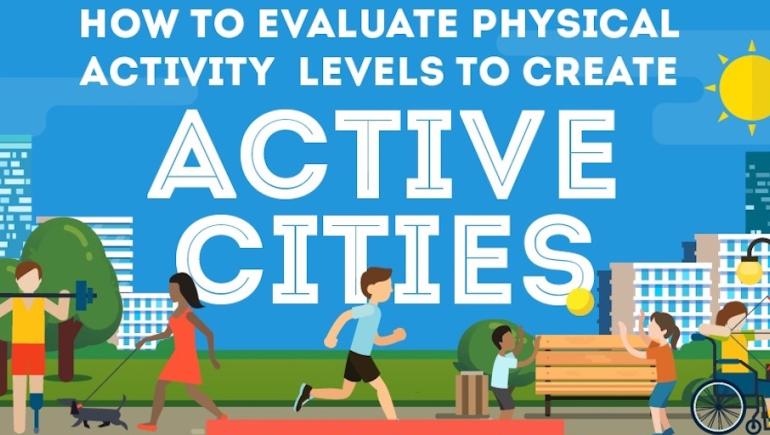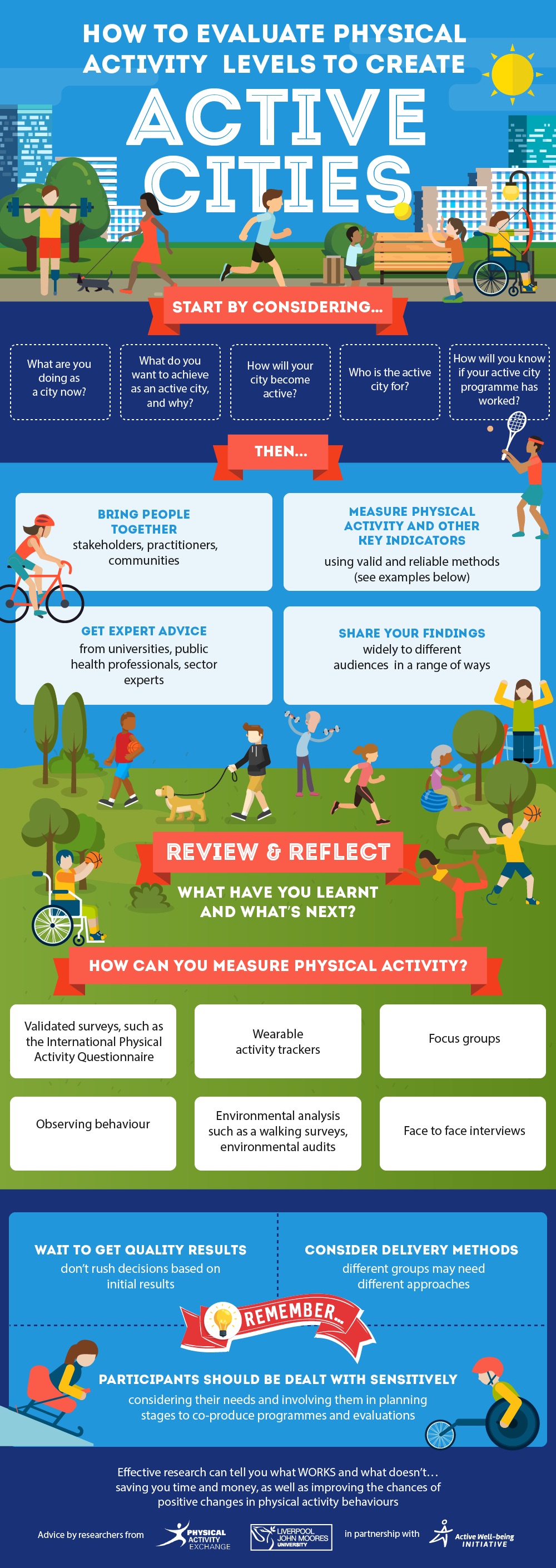Leading sport and exercise scientists have created a starting guide for cities and regions that want to map physical activity levels among their populations.
Academics from Liverpool John Moores University (LJMU) produced the infographic (below) to help public services save time and money by planning effective research before embarking on expensive projects to promote physical activity and healthy behaviours.
The team from the university’s Physical Activity Exchange (PAEx) said local authorities which invest in evaluation waste fewer resources and achieve better results.
LJMU’s Dr Lynne Boddy said: “By using evidence-based practices, cities can understand what works and why – and what doesn’t work, and what needs to evolve. Evaluation tells them what is effective, and cost-effective, and what isn’t. We can identify, replicate and share good practices.”
Previous research by Sport England has demonstrated that, for example, an adult aged 30 to 49 who takes up swimming once a week reduces their lifetime healthcare costs by £3,768 (€4,252). The PAEx produced its guide following a week-long workshop attended by urban leaders whose home cities are trying to achieve Global Active City status.
The Global Active City programme, run by the Active Well-being Initiative and supported by the International Olympic Committee, recommends that all members work closely with local universities to develop successful active city strategies.
John Marsden, Director of Global Active City Development for the AWI, said: “Many cities in the world are facing unprecedented financial and administrative challenges. They need more than ever to make evidence-based use of resources and take effective measures.”
To find out more, click here.














